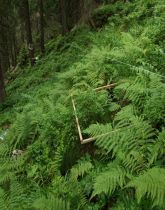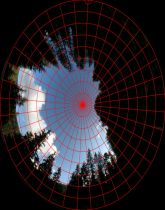Hľadaj
Zobraz:
Univerzity
Kategórie
Rozšírené vyhľadávanie
45 146
projektov
Home » Projekt » Vplyv svetelných podmienok na variabilitu a diverzitu prízemnej vegetácie prírodných horských smrečín
Vplyv svetelných podmienok na variabilitu a diverzitu prízemnej vegetácie prírodných horských smrečín
| Prípona .doc |
Typ projekt |
Stiahnuté 8 x |
| Veľkosť 0,1 MB |
Jazyk slovenský |
ID projektu 25123 |
| Posledná úprava 06.06.2009 |
Zobrazené 2 264 x |
Autor: tulak |
 Zdieľaj na Facebooku
Zdieľaj na Facebooku |
||
| Detaily projektu | ||
- cena:
0 Kreditov - kvalita:
85,1% -
Stiahni
- Pridaj na porovnanie
- Univerzita:Technická univerzita vo Zvolene
- Fakulta:Lesnícka fakulta
- Kategória:Prírodné vedy » Ekológia a environmentalistika
- Predmet:Fytocenológia a lesnícka typológia
- Študijný program:-
- Ročník:5. ročník
- Formát:MS Office Word (.doc)
- Rozsah A4:1 strán
- Dokumentácia:Stiahni
Na piatich modelových lokalitách v prírodných horských smrekových lesoch Nízkych Tatier sme skúmali vplyv svetla pod zápojom dospelých stromov na jednotlivé taxóny i celkovú variabilitu a diverzitu prízemnej vegetácie. Údaje o vegetácii, dostupnosti svetla (metóda hemisférických fotografií) a iných vybraných faktoroch prostredia sme získali na 302 plochách o veľkosti 1m2, umiestnených v pravidelnej sieti na tranzektoch v rámci jednotlivých lokalít. Chronosekvenčný dizajn mikrostanovištných plôch nám umožnil sledovať variabilitu vegetácie na úrovni maloplošnej dynamiky lesnej vegetácie (tzv. dynamiky porastových medzier).
Bol dokázaný signifikantný vplyv difúzneho svetla na celkovú gradáciu a druhovú diverzitu bylinnej vrstvy vegetácie. Najtesnejší pozitívny vzťah bol nájdený medzi difúznym svetlom a dominanciou druhov Athyrium distentifolium a Calamagrostis villosa, avšak niektoré druhy tesnejšie korelujú s priamou slnečnou radiáciou (Rubus idaeus, Calamagrostis arundinacea). Uvedené druhy sprevádzajú porastové medzery a ich gradáciu možno považovať za indikáciu štádia rozpadu v zmysle konceptu malého vývojového cyklu lesa. Mierne negatívny až indiferentný vzťah machorastov a niektorých bylín k priamej slnečnej radiácii možno pripísať ich výskytu pod tieňom vysokých bylín viacvrstvovej (prízemnej) vegetácie. Túto skutočnosť nebolo možné zohľadniť metódou hemisférických fotografií. Negatívny vzťah medzi ukazovateľmi svetla a pokryvnosťou zmladenia jarabiny a semenáčikov smreka, vysvetľujeme konkurenčným účinkom bylín, ktoré v presvetlených častiach porastu gradujú. To potvrdzuje mnohými autormi opísaný význam mŕtveho dreva ako optimálneho mikrohabitatu pre regeneráciu drevín v horských podmienkach. Signifikantný vplyv svetla na variabilitu vegetácie bol potvrdený aj priamou ordinačnou metódou CCA, pričom boli okrem svetla zohľadnené aj iné dôležité faktory prostredia. Súčasťou práce sú aj modelové krivky odozvy vybraných druhov prízemnej vegetácie na gradient svetla (ekologické amplitúdy druhov na krátkom gradiente), platné pre podmienky horských smrekových lesov 7. vegetačného stupňa.
English verzion:
Influence of light conditions on variability and diversity of field-layer vegetation in the mountain spruce natural forests
Summary
At five localities of the mountain Norway spruce natural forests in the Nízke Tatry Mts. (Western Carpathians), we studied the effect of light under the forest canopy on the variability and diversity of ground vegetation. Data on vegetation, the availability of light (hemispherical photographs) and other selected environmental factors we obtained for the 302 plots on the size of 1m2, located in the rectangular grids within individual localities. Chronosequency sampling design of microsite plots allows to study the variability of vegetation on the level of small-scale forest dynamics (gap dynamics).
Significant influence of diffuse light on the overall understorey vegetation gradation and herb layer species diversity was found. Strongest positive correlation was found between the diffuse light and the dominance of Athyrium distentifolium and Calamagrostis villosa, but some species more closely correlated with direct solar radiation (Rubus idaeus, Calamagrostis arundinacea). Those species follow canopy gaps and their gradation can be considered as an indication of the decay stage (in terms of the developmental stages of the virgin-forest life-cycle). Slightly negative or indiferent relationship of moss layer and some herbs to the direct solar radiation can be attributed to their occurrence under the shading of high understory vegetation. This effect cannot be recorded by method of hemispheric photographs. Negative relationship between the variables of light availability and tree regeneration (Picea abies) can be explained by the competitive effects of vigorous vegetation, which culminates within larger canopy gaps. This is confirmed by many authors describing the importance of dead wood as an optimal microhabitat for regeneration of trees in the mountain forest conditions. Significant influence of light on the variability of vegetation was also confirmed by direct ordination method CCA, with respect to other important environmental factors. The results of “microcoenosis types” were statistically tested using one-way analysis of variance and Duncan's multiple range test. The species response curves of selected ground vegetation species to the gradient of light (the ecological amplitudes in the short gradient), applicable for the subalpine spruce forests, is also part of this paper.
Key words: subalpine spruce forest, Picea abies, light availability, hemispherical photographs, understory vegetation
Bol dokázaný signifikantný vplyv difúzneho svetla na celkovú gradáciu a druhovú diverzitu bylinnej vrstvy vegetácie. Najtesnejší pozitívny vzťah bol nájdený medzi difúznym svetlom a dominanciou druhov Athyrium distentifolium a Calamagrostis villosa, avšak niektoré druhy tesnejšie korelujú s priamou slnečnou radiáciou (Rubus idaeus, Calamagrostis arundinacea). Uvedené druhy sprevádzajú porastové medzery a ich gradáciu možno považovať za indikáciu štádia rozpadu v zmysle konceptu malého vývojového cyklu lesa. Mierne negatívny až indiferentný vzťah machorastov a niektorých bylín k priamej slnečnej radiácii možno pripísať ich výskytu pod tieňom vysokých bylín viacvrstvovej (prízemnej) vegetácie. Túto skutočnosť nebolo možné zohľadniť metódou hemisférických fotografií. Negatívny vzťah medzi ukazovateľmi svetla a pokryvnosťou zmladenia jarabiny a semenáčikov smreka, vysvetľujeme konkurenčným účinkom bylín, ktoré v presvetlených častiach porastu gradujú. To potvrdzuje mnohými autormi opísaný význam mŕtveho dreva ako optimálneho mikrohabitatu pre regeneráciu drevín v horských podmienkach. Signifikantný vplyv svetla na variabilitu vegetácie bol potvrdený aj priamou ordinačnou metódou CCA, pričom boli okrem svetla zohľadnené aj iné dôležité faktory prostredia. Súčasťou práce sú aj modelové krivky odozvy vybraných druhov prízemnej vegetácie na gradient svetla (ekologické amplitúdy druhov na krátkom gradiente), platné pre podmienky horských smrekových lesov 7. vegetačného stupňa.
English verzion:
Influence of light conditions on variability and diversity of field-layer vegetation in the mountain spruce natural forests
Summary
At five localities of the mountain Norway spruce natural forests in the Nízke Tatry Mts. (Western Carpathians), we studied the effect of light under the forest canopy on the variability and diversity of ground vegetation. Data on vegetation, the availability of light (hemispherical photographs) and other selected environmental factors we obtained for the 302 plots on the size of 1m2, located in the rectangular grids within individual localities. Chronosequency sampling design of microsite plots allows to study the variability of vegetation on the level of small-scale forest dynamics (gap dynamics).
Significant influence of diffuse light on the overall understorey vegetation gradation and herb layer species diversity was found. Strongest positive correlation was found between the diffuse light and the dominance of Athyrium distentifolium and Calamagrostis villosa, but some species more closely correlated with direct solar radiation (Rubus idaeus, Calamagrostis arundinacea). Those species follow canopy gaps and their gradation can be considered as an indication of the decay stage (in terms of the developmental stages of the virgin-forest life-cycle). Slightly negative or indiferent relationship of moss layer and some herbs to the direct solar radiation can be attributed to their occurrence under the shading of high understory vegetation. This effect cannot be recorded by method of hemispheric photographs. Negative relationship between the variables of light availability and tree regeneration (Picea abies) can be explained by the competitive effects of vigorous vegetation, which culminates within larger canopy gaps. This is confirmed by many authors describing the importance of dead wood as an optimal microhabitat for regeneration of trees in the mountain forest conditions. Significant influence of light on the variability of vegetation was also confirmed by direct ordination method CCA, with respect to other important environmental factors. The results of “microcoenosis types” were statistically tested using one-way analysis of variance and Duncan's multiple range test. The species response curves of selected ground vegetation species to the gradient of light (the ecological amplitudes in the short gradient), applicable for the subalpine spruce forests, is also part of this paper.
Key words: subalpine spruce forest, Picea abies, light availability, hemispherical photographs, understory vegetation
Kľúčové slová:
Sorbeto-Piceetum
Picea abies
dostupnosť svetla
hemisférické fotografie
bylinná synúzia
subalpine spruce forest
Picea abies
light availability
hemispherical photographs
understory vegetation
Zdroje:
- GLONČÁK, P., 2009: Vplyv svetelných podmienok na variabilitu a diverzitu prízemnej vegetácie prírodných horských smrečín. In.: Lieskovský, M., Šálka, J. (eds.). Zborník anotácií 49. lesníckej konferencie ŠVOČ, Technická univerzita vo Zvolene. ISBN 978-80-228-1990-9, p. 35-36.
- GLONČÁK, P., 2009: Vplyv svetelných podmienok na variabilitu a diverzitu prízemnej vegetácie prírodných horských smrečín. Acta Facultatis Forestalis Zvolen. - ISSN 0231-5785. - Roč. 51, Suppl. 1 (2009), s. 69-83
- http://www.tuzvo.sk/files/LF-KF/Gloncak_AFF_2009_vplyv_svetla_na_prizemnu_vegetaciu2.pdf
- http://www.library.sk/aRL/browselist.php?display_term=Vplyv%20sveteln%FDch%20podmienok%20na%20variabilitu%20a%20diverzitu%20pr%EDzemnej%20veget%E1cie%20pr%EDrodn%FDch%20horsk%FDch%20smre%E8%EDn&;variables=0%21un_epca&language=slovak&ictx=sldk&search_string=search%0A%0A%0A%0Af4+%3D+%27Vplyv+sveteln%FDch+podmienok+na+variabilitu+a+diverzitu+pr%EDzemnej+veget%E1cie+pr%EDrodn%FDch+horsk%FDch+smre%E8%EDn%27%0Asldk_un_epca%0Adefault%0A%0A






